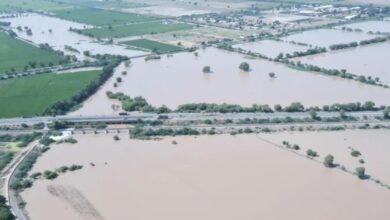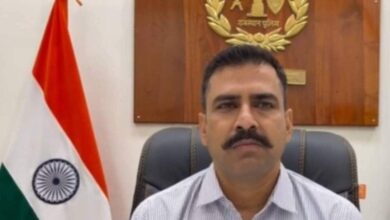Rajasthan
Infra Of This Nearly 300-yr-old City Got It The Status Of Capital | Jaipur News


Jaipur: As the city prepares to celebrate its 296th foundation day on Saturday, take a peek into the tumultuous journey to its new avatar as the capital of Rajasthan 74 years ago. Founded in 1727 by visionary ruler Sawai Jai Singh II, the city was the initial choice to be the capital of newly integrated Rajasthan. Buried in the history of its glorious tales is a little-known story of how Jaipur pipped Jodhpur and frustrated Ajmer to retain its status as the state capital.
Deputy Prime Minister Sardar Vallabhbhai Patel inaugurated the union of Rajasthan on March 30, 1949. A vexing question, though, lingered: where should the capital be located? The two prominent contenders were Jaipur and Jodhpur, each with its own merits. To settle the matter, a committee consisting of BR Patel, TC Puri and HP Singha was constituted. On March 27, the committee submitted its report, recommending Jaipur as the capital, while allocating high court and customs and excise departments to Jodhpur.
The matter seemed settled until 1956 when Ajmer was merged into Rajasthan. The question of the capital city was once again up for debate, but many in Jaipur vehemently opposed the relocation of the capital. To definitively settle the dispute, in 1958 the Government of India constituted the Rajasthan Capital Enquiry Committee comprising P Satyanarana Rao, V Viswanathan and BK Guha.
This committee considered several cities, including Mount Abu, Bikaner, Udaipur, Kota, Ajmer, Jodhpur, and Jaipur. The members met various stakeholders from these cities and meticulously examined existing infrastructure, as well as the ability to accommodate the expected influx of population if the capital were to be moved from Jaipur.
Ajmer’s proponents had a strong case, citing its central location, healthy climate and historical, religious and political importance. The Rajasthan Provincial Congress Committee’s 1949 decision to support Ajmer as the capital further bolstered its claim. Leaders argued that Ajmer’s infrastructure, including Mayo College, could serve as a sufficient nucleus for the government buildings required for a capital.
The committee explored various historical and administrative factors, including Arnold J Toynbee’s “Study in History”.
It considered the city’s geographical location, communication facilities, presence of state-owned and privately-rented buildings for government accommodations, room for expansion, climatic conditions, essential resources like water supply and electricity, transportation, education and medical facilities.
The committee concluded that Jaipur remained the most practical choice, considering these multifaceted factors. Even as other cities like Ajmer had a compelling case, it was Jaipur’s infrastructure that tipped the scales.
The committee noted that Ajmer was a comparatively small town, as evidenced by statistical data and even in 1949 it was not suitable for being the capital. The committee recommended that the capital should not be shifted from Jaipur, but the Rajasthan Public Service Commission, Board of Secondary Education and Board of Revenue may be located in Ajmer.
Deputy Prime Minister Sardar Vallabhbhai Patel inaugurated the union of Rajasthan on March 30, 1949. A vexing question, though, lingered: where should the capital be located? The two prominent contenders were Jaipur and Jodhpur, each with its own merits. To settle the matter, a committee consisting of BR Patel, TC Puri and HP Singha was constituted. On March 27, the committee submitted its report, recommending Jaipur as the capital, while allocating high court and customs and excise departments to Jodhpur.
The matter seemed settled until 1956 when Ajmer was merged into Rajasthan. The question of the capital city was once again up for debate, but many in Jaipur vehemently opposed the relocation of the capital. To definitively settle the dispute, in 1958 the Government of India constituted the Rajasthan Capital Enquiry Committee comprising P Satyanarana Rao, V Viswanathan and BK Guha.
This committee considered several cities, including Mount Abu, Bikaner, Udaipur, Kota, Ajmer, Jodhpur, and Jaipur. The members met various stakeholders from these cities and meticulously examined existing infrastructure, as well as the ability to accommodate the expected influx of population if the capital were to be moved from Jaipur.
Ajmer’s proponents had a strong case, citing its central location, healthy climate and historical, religious and political importance. The Rajasthan Provincial Congress Committee’s 1949 decision to support Ajmer as the capital further bolstered its claim. Leaders argued that Ajmer’s infrastructure, including Mayo College, could serve as a sufficient nucleus for the government buildings required for a capital.
The committee explored various historical and administrative factors, including Arnold J Toynbee’s “Study in History”.
It considered the city’s geographical location, communication facilities, presence of state-owned and privately-rented buildings for government accommodations, room for expansion, climatic conditions, essential resources like water supply and electricity, transportation, education and medical facilities.
The committee concluded that Jaipur remained the most practical choice, considering these multifaceted factors. Even as other cities like Ajmer had a compelling case, it was Jaipur’s infrastructure that tipped the scales.
The committee noted that Ajmer was a comparatively small town, as evidenced by statistical data and even in 1949 it was not suitable for being the capital. The committee recommended that the capital should not be shifted from Jaipur, but the Rajasthan Public Service Commission, Board of Secondary Education and Board of Revenue may be located in Ajmer.




